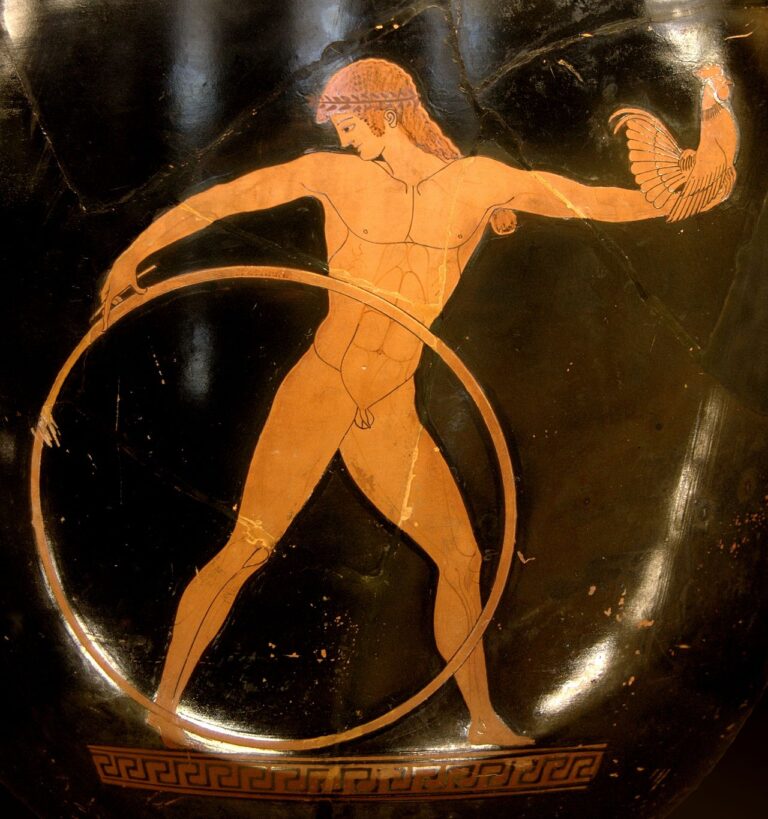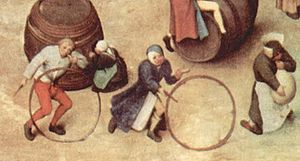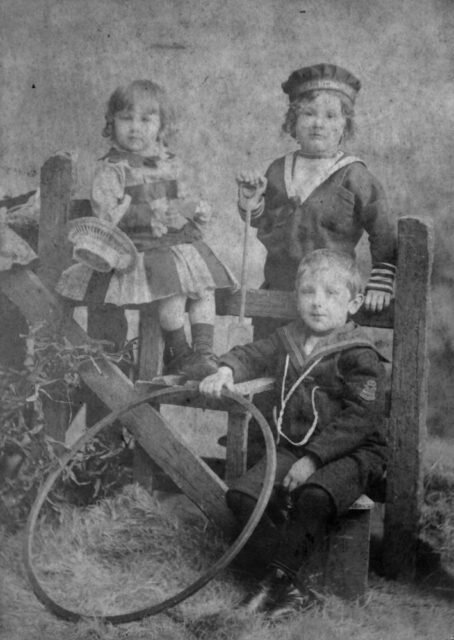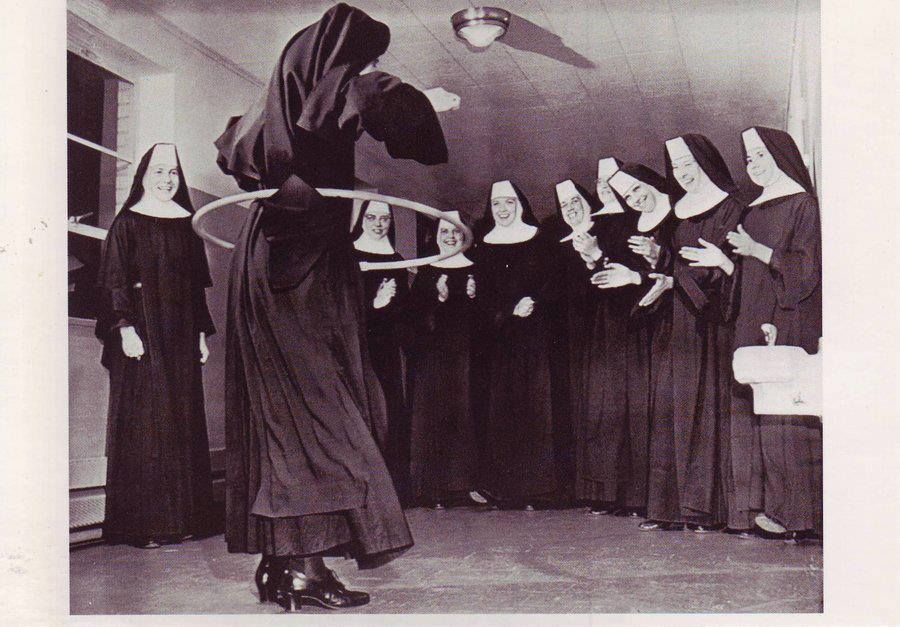

In the late 50s and early 60s, a Hula Hoop fad conquered the United Stated. Scores of energetic children spun brightly colored plastic circular tubes of different sizes on their gyrating hips. 25 million of these toys were sold within four months in 1958!
Despite the unexpected rise of neck and hip injuries caused by this new craze, enthusiasts refused to stop the fad. This was a new and fun game! But the mid-century American obsession with spinning hoops on their hips was merely a resurgence of an ancient game. The hoops craze actually began in ancient Egypt thousands of years ago before sweeping through Greece, Rome, medieval Europe, and into modern times.
Hoops in the Ancient World
Egyptian, Greek, and Roman kids made spinning hoops out of primitive materials, the most common of which was stripped grapevine. These hoops were pushed along the ground with a stick, tossed in the air, and caught by children to make them spin around the waist. An image on a an ancient Greek vase displayed at the Louvre depicts the Greek god Ganymede playing with such a hoop.

Romans Used Hoops for Target Practice and Agility Training
Following the Greeks, the Romans adopted the hoop and called it a trochus. They updated the stripped grapevines with lighter and more firmly assembled materials. The Romans also added metal rims to the hoops to make them easier to spin on the street by pushing them with a stick. The game of pushing a hoop down the road was adapted by the military, who turned the game into a target practice exercise for their pilum (the javelin throwing legionaries). This training was aimed at helping the javelin throwers to improve their ability to hit a moving target. Later, this practice was also adopted by the Eastern Roman Empire (Byzantine Empire), who recommended its use for health reason. Byzantine physicians, in fact, recommended jumping and running through hoops to increase fitness and agility.
England Tries to Kill the Hoop but Finds That Hoops Kill

After the fall of the Roman Empire, the next recorded hoop fad spun up in 14th-century England. All of a sudden, herds of children and adults were to be found in the streets spinning hoops made mostly out of wood. Local physicians were not amused as they started to have to treat a myriad of problems, including neck pain and dislocated backs. A new variant of the game developed in England called “Kill the Hoop.” In this game, players shot darts through the center of moving hoops. It was such a strenuous game that many adults’ hearts gave out as they played. Kill the Hoops quickly morphed into Hoops Kill!

Adding a Bit of Hula to the Hoop
It was only in the 1700s, when British sailors first witnessed hula dancing in Hawaii, that “hula” was added to the name of the hoop game, and that name is still used to this day. The hip-gyrating Hawaiian religious dances performed by half-naked dancers that praised the gods and celebrated fertility were shockingly sensual to the more staid and proper British missionaries. The Brits were so scandalized that they immediately discouraged the practice of hula-hooping and forced change within Hawaiian traditions.

The Modern Hula Hoop
Spinning hoops were once again re-invented in the United States by Arthur “Spud” Melin and his friend, Richard Knerr, who were inspired by the bamboo hoops Australian school children used in gym classes. Melin and Knerr created the Wham-O company in California, U.S.A., 1958, and the company sold 25 million newly named Hula Hoops in four months. Today’s Hula Hoops are mostly made out of plastic, but enterprising young children could still make their own out of grapevines, if they were so inclined.